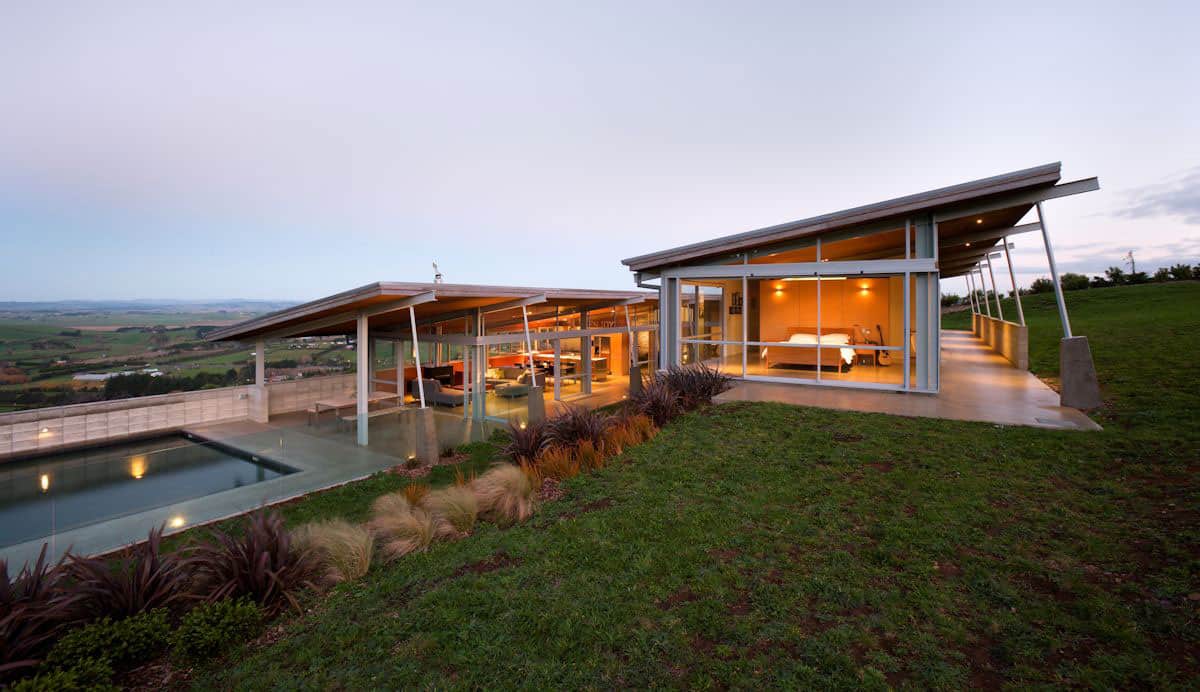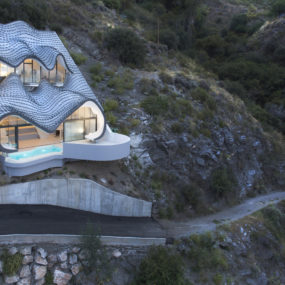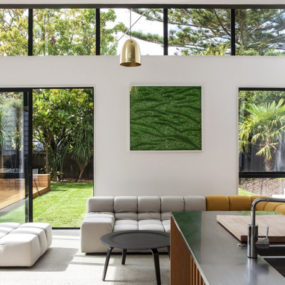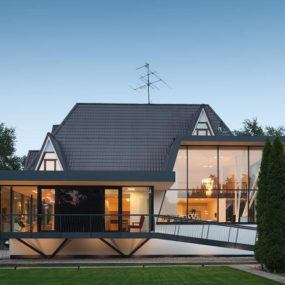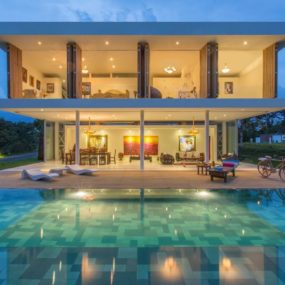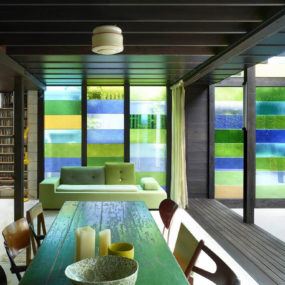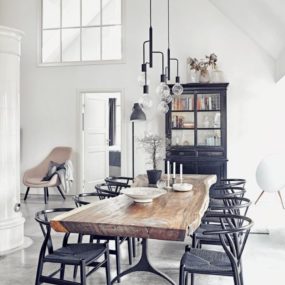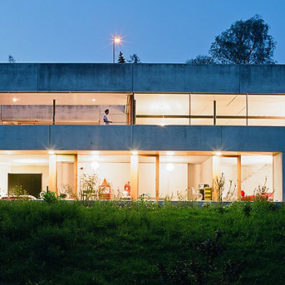Nestled into an undulating and steep wooded slope on the Dorset/Wiltshire border in the historic, rural Wiltshire village of Ansty, UK, and overlooking a collection of 12th century buildings, Ansty Plum House was originally designed by David Levitt in the 60s but has been most recently redesigned by Coppin Dockray with a modern upgrade and expansion of the 2-tiered house, a studio and a cottage ruin, all in separate buildings stepped down the slope.

Peter and Alison Smithson originally designed the studio in the 70s for the original owner. The studio had suffered structural failure, water damage and decay and was in need of much TLC.
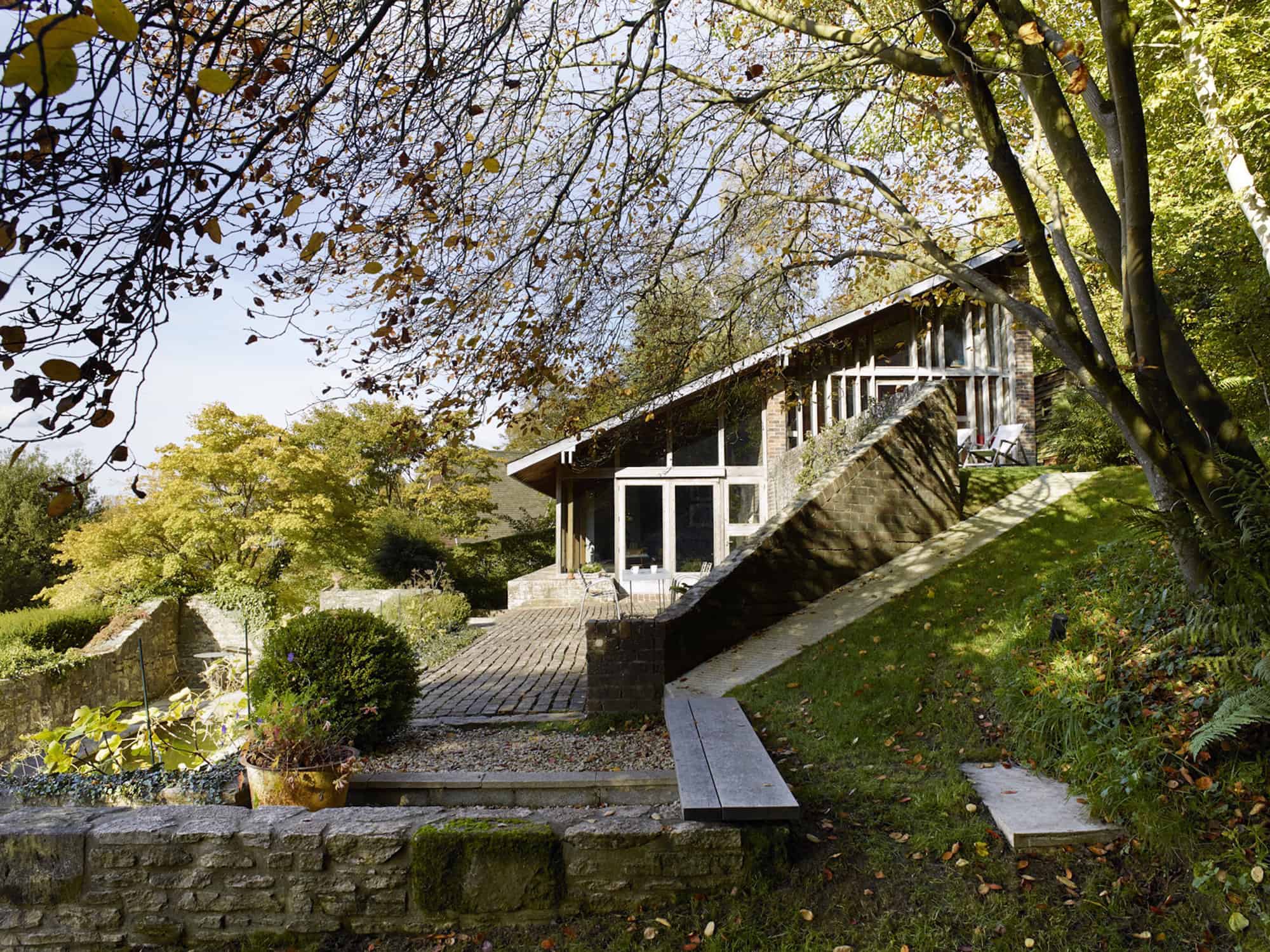
Aside from upgrading the original structures, original landscaping was restored and extensive native planting has begun using mostly ferns, foxgloves, bluebells and wild garlic.

A historic and incomplete cottage ruin located below the house and between a garden and the studio was originally built by a man named Mr. Tucker in what was his plum orchard. The cottage ruin is now the location of a natural swimming and wildlife pond tucked behind the exterior wall portions and open to the sky thanks to the lack of roof on the ruin.
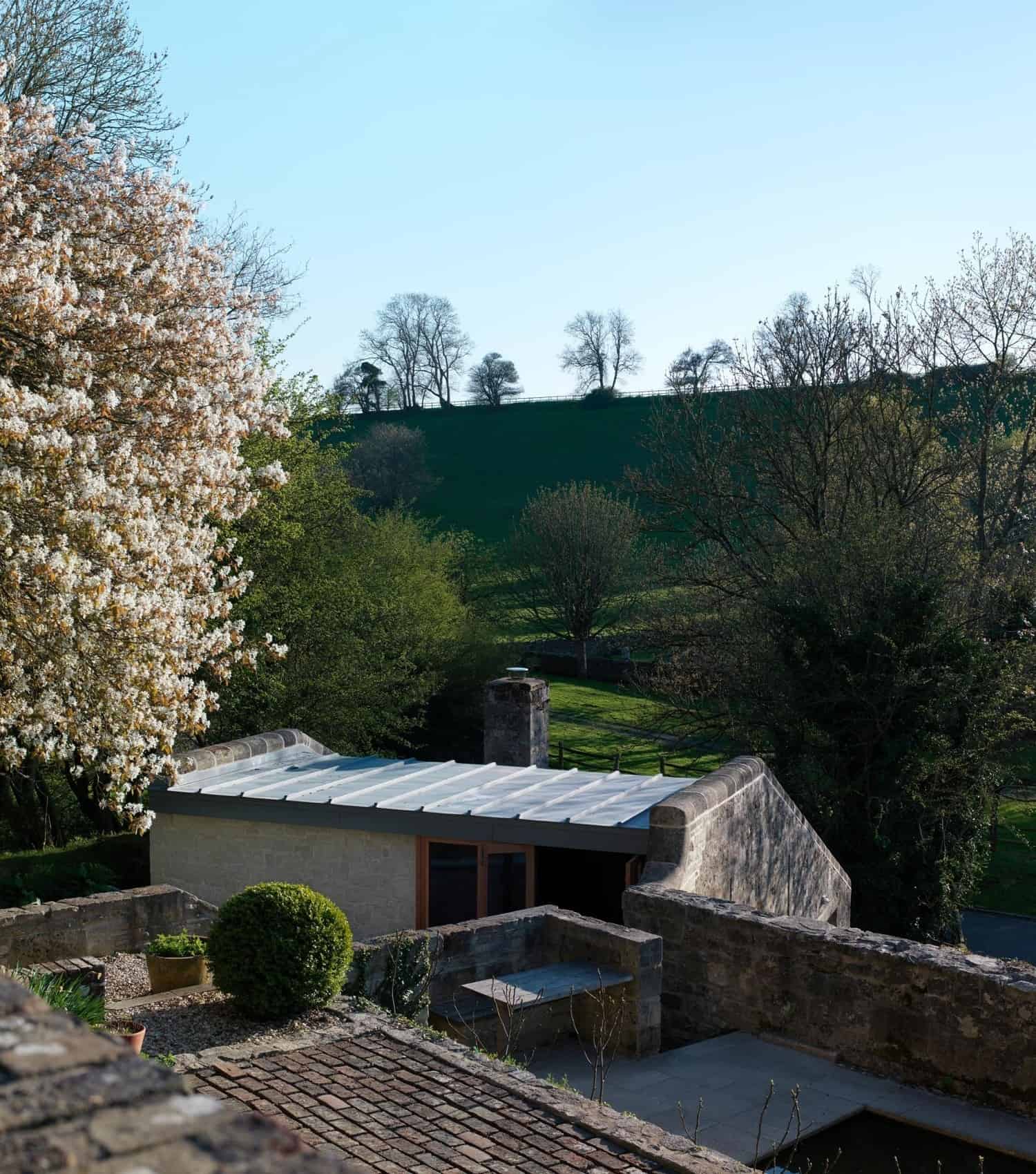
The failed roof of the studio was replaced with a new insulated zinc roof and cast concrete copings. The building was underpinned, tanked and insulated and services and heating where added.

The studio was extended and hedged into the hill and on the side closest to the outdoor pond is the garage, accessed by a gravel lane. The stonewall of the garage connects to the cottage ruins, hiding the pond and the studio garden creating in effect the appearance of a relic rather than a lively, lived in family library and work space complete with washroom.
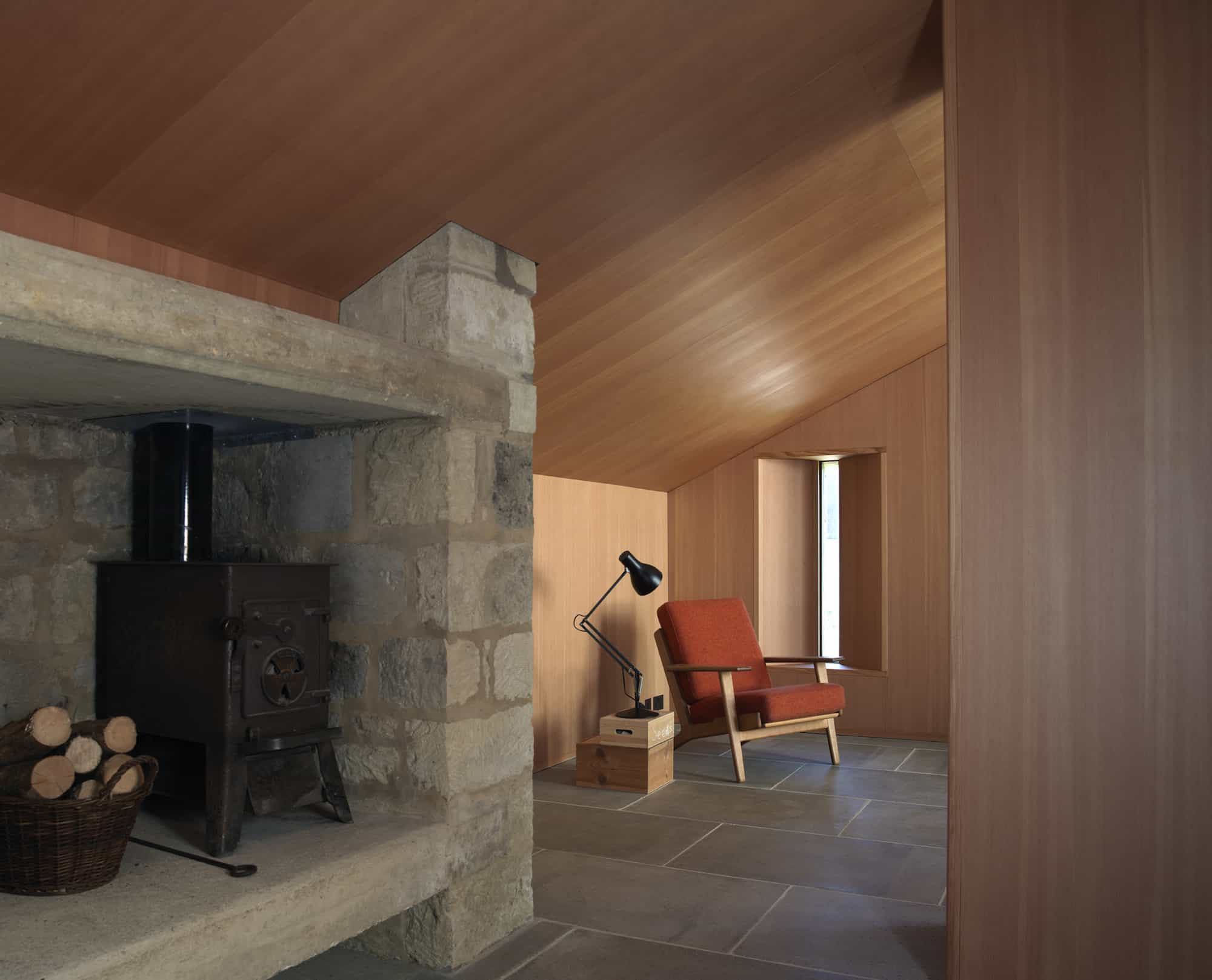
The walls and ceiling of the studio are covered in Douglas-fir millwork while the floors are large format tiles with underfloor heating. The original fireplace has been fitted with a heat efficient wood stove and the natural stone surround absorbs the heat before slowly releasing it back into the room.

The studio is even fitted with a skylight and the Douglas-fir millwork on the wall has a uncharacteristic niche built into it.
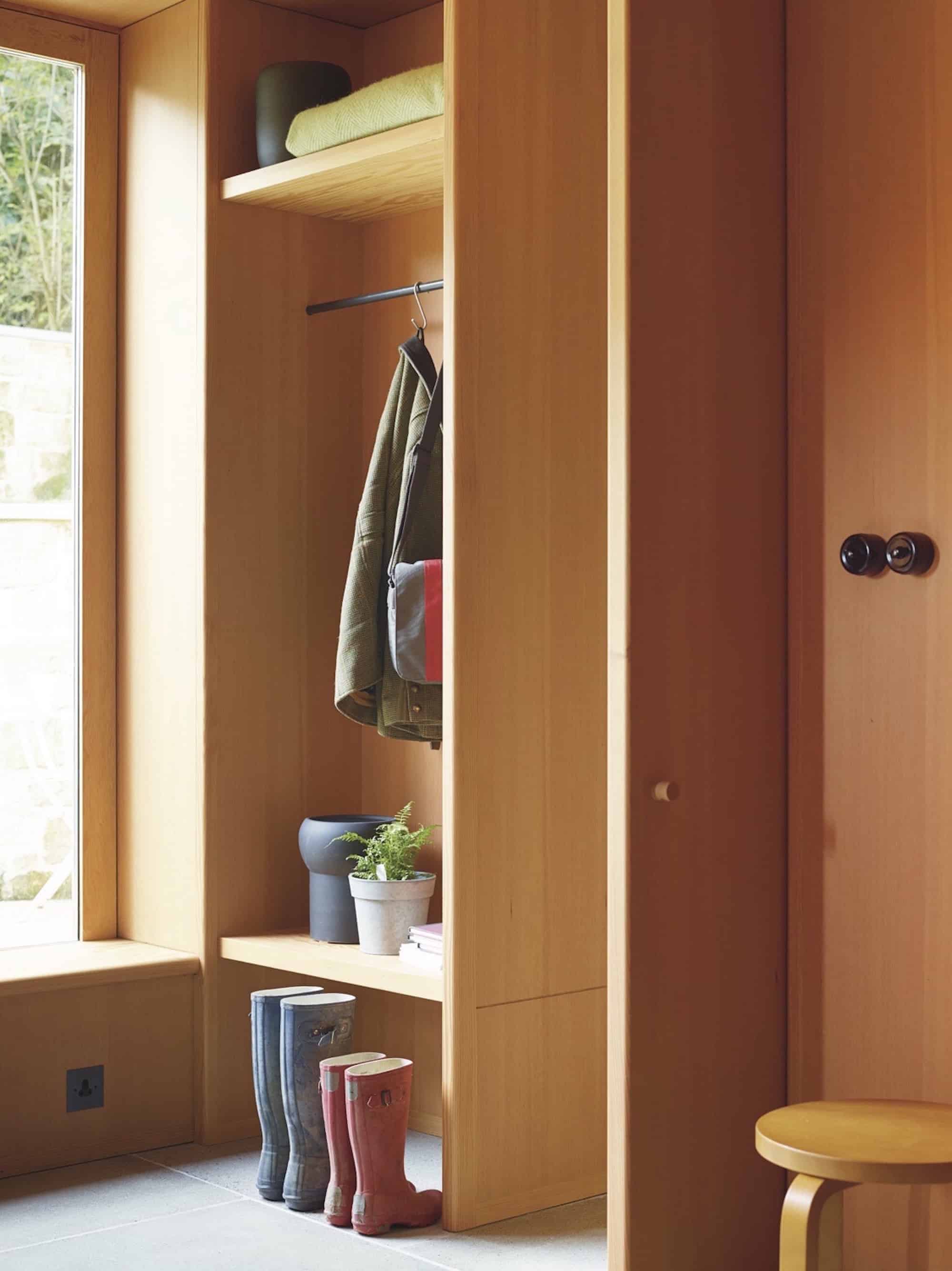
A simple closet continues the wood theme as do the window and door frameworks.

The room furthest from the outdoor pond is the studio bathroom and this is one room that, except for the ceiling and vanity shelf, leaves the wood look behind.

The bathroom walls are either the original stone or a continuation of the large format tiles and is open to a mossy fern bank that glows green at night with the outdoor lighting that has been strategically positioned within the mossy fern bank.
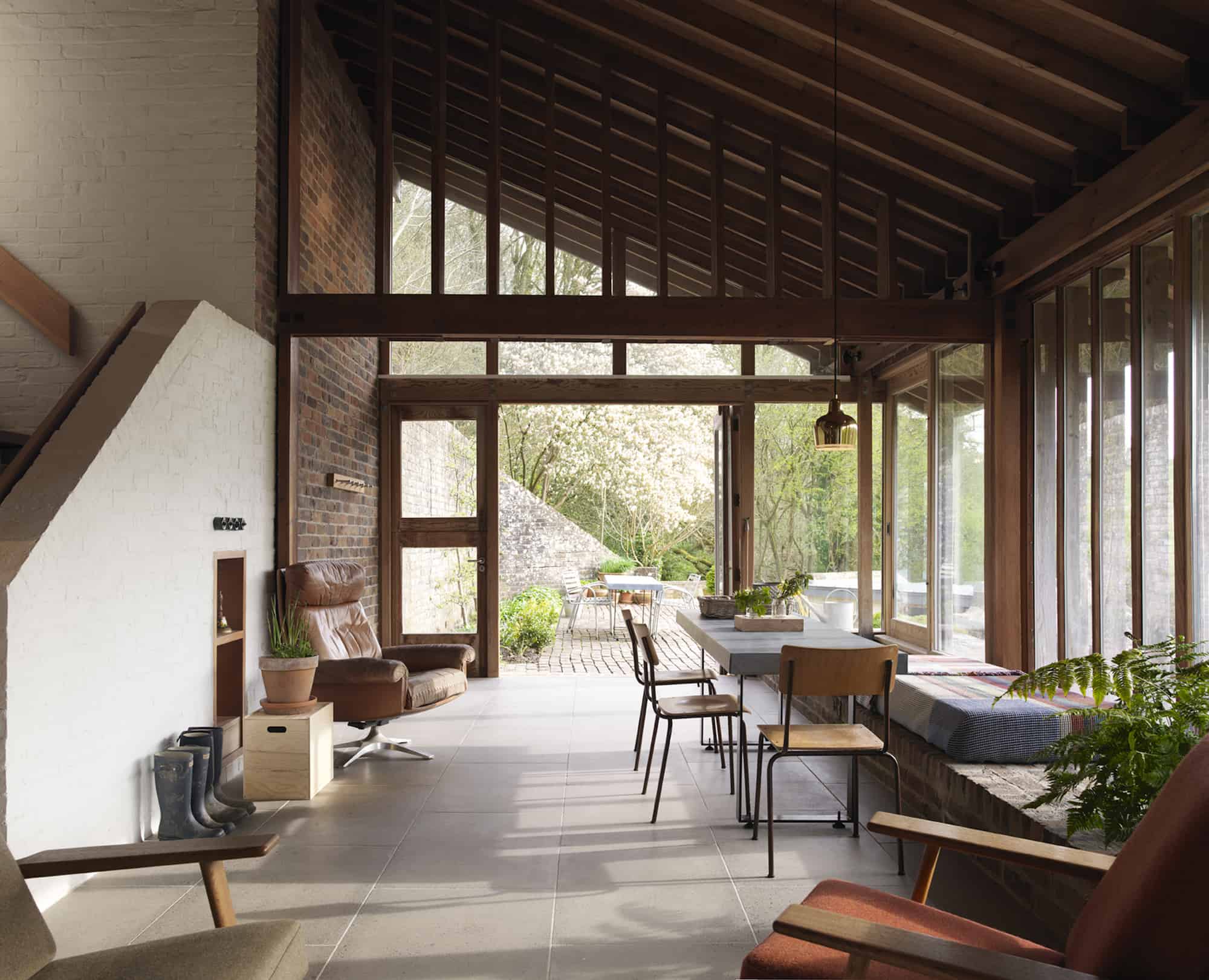
Both the studio and the family home where redesigned with extensive, meticulous repairs, keeping as much of the original volumes as possible to preserver the structure’s heritage while at the same time including 21st century improvements for thermal performance, with a final result in approximately 80% reduction in the annual carbon emissions.
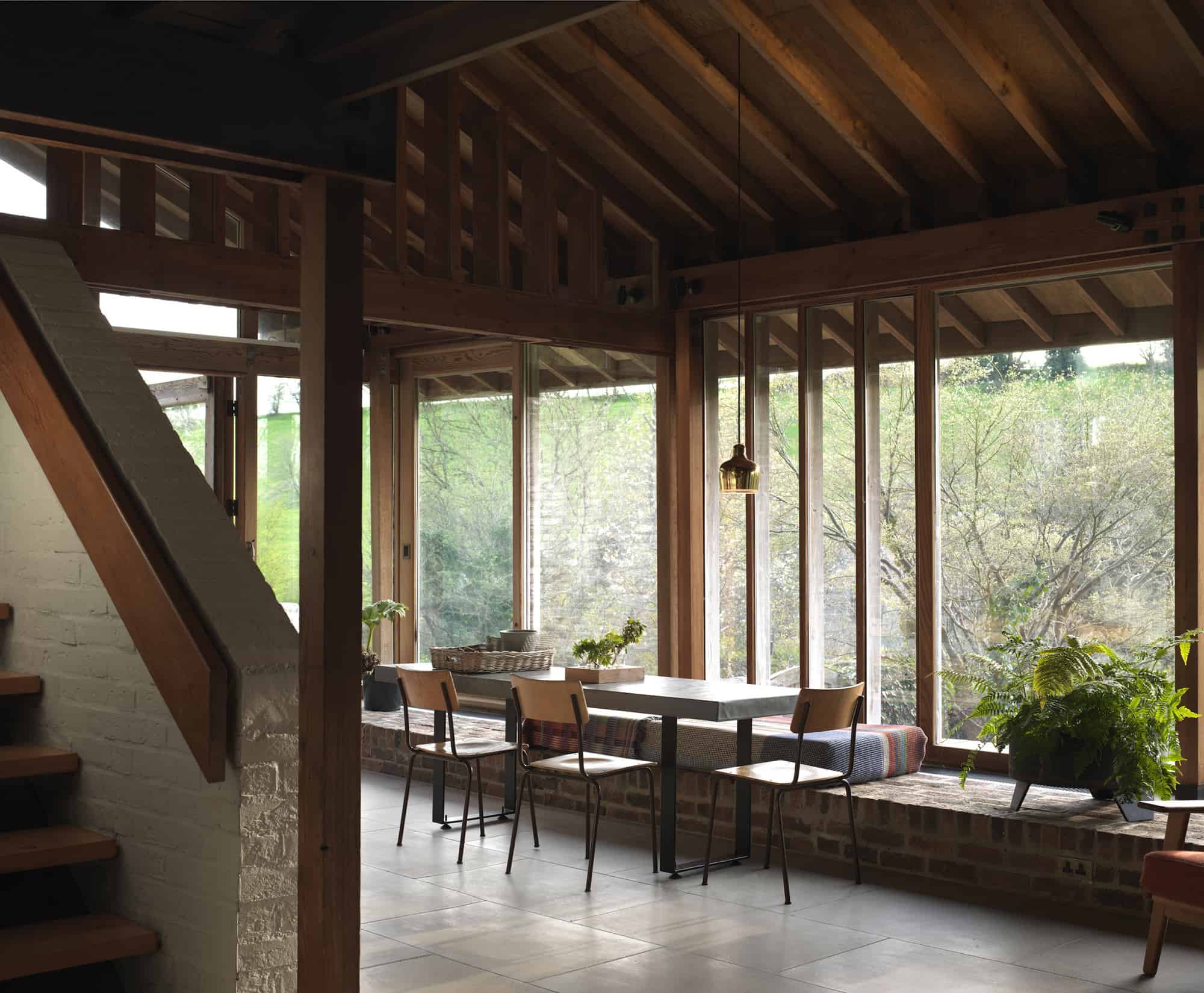
The final design for Ansty Plum House is a brick and timber house with walls of glazing overlooking the garden, the cottage ruin with pond and the studio structure. The new open floor plan has had both central and underfloor heating systems added and the whole ambiance is one of warmth and charm, like a cabin in the woods only better.
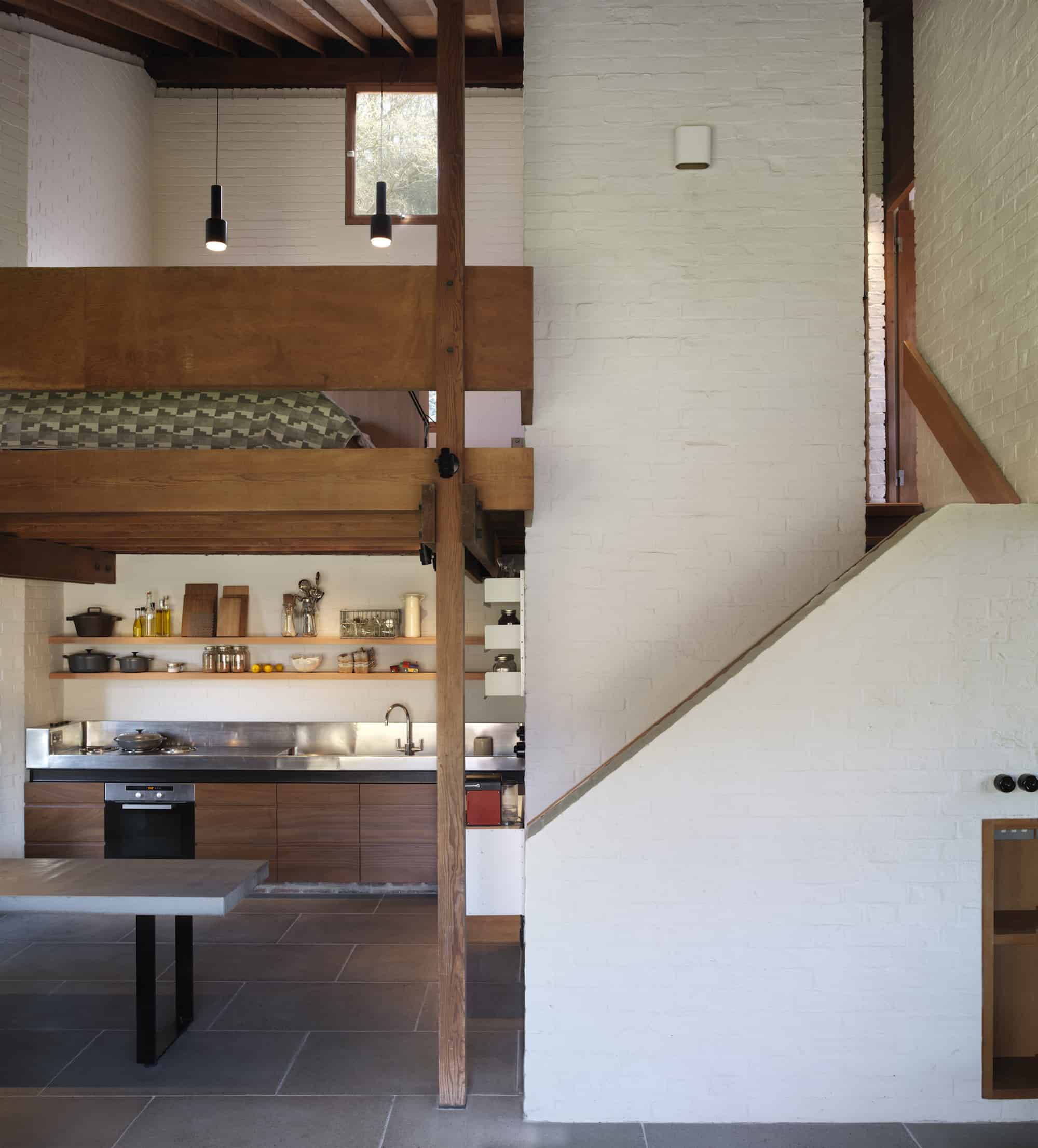
The stairwell to the upper tier of the house separates the living and dining room from the kitchen which is located under a loft style bedroom.
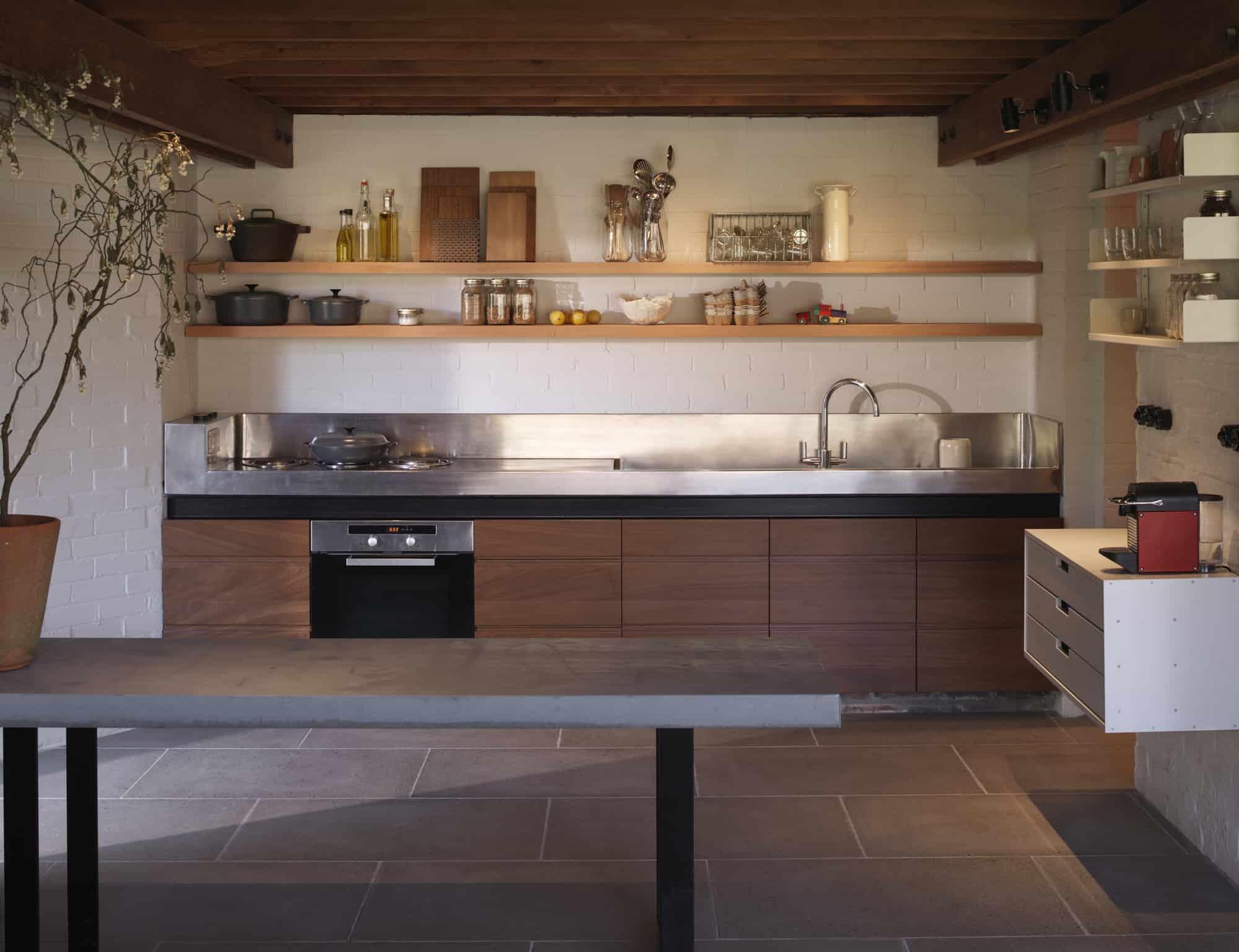
The kitchen is a large space with Stainless Steel counters and open wood shelving above. The millwork on the cabinets is book matched horizontal grain for a contemporary aesthetic that does not seem out of place in a home that proudly showcases many of its original details.

The chairs used in the dining area have a mid century throw back aesthetic and the exposed brick that is used for bench seating on one side is original to the 60s house.
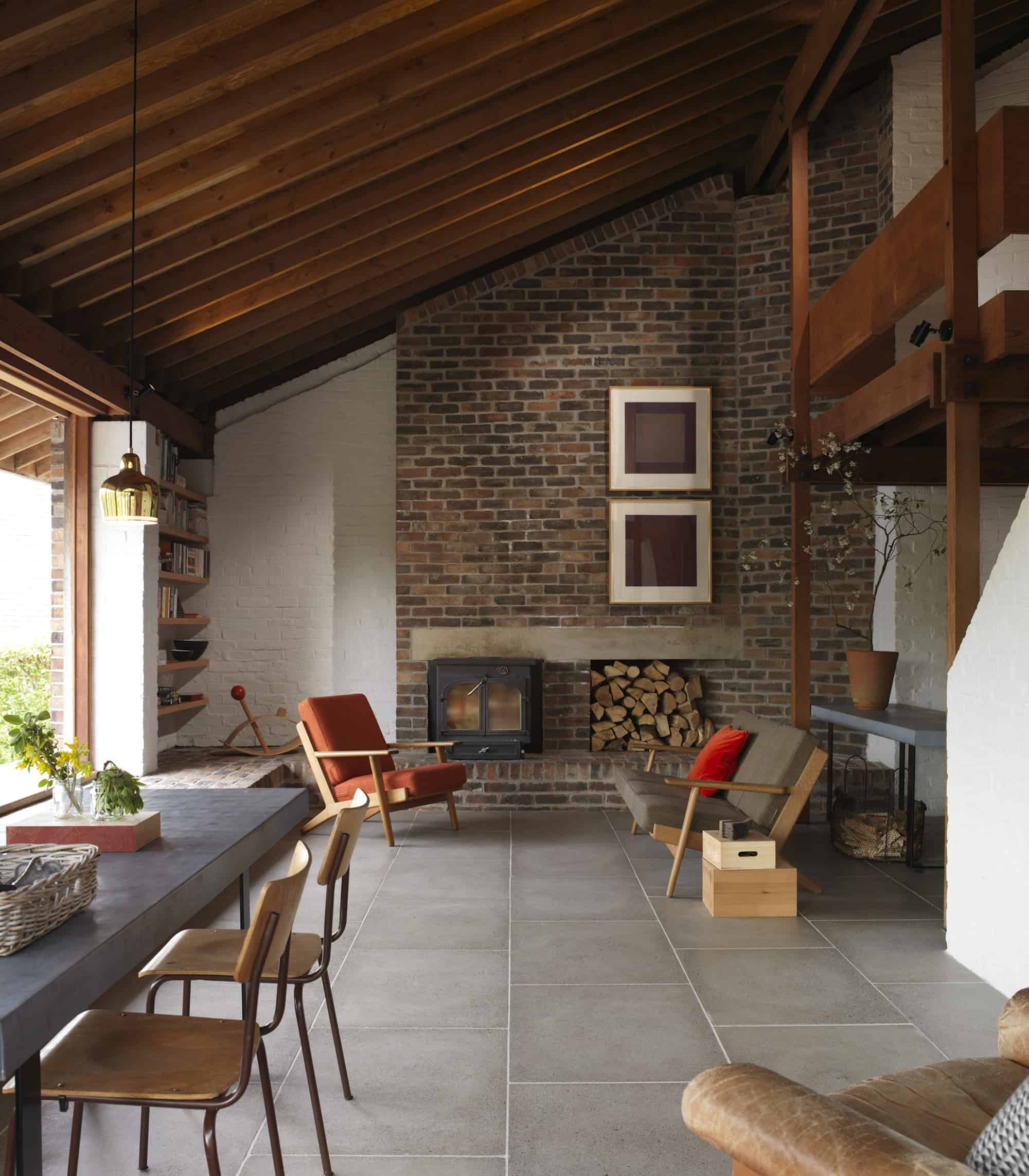
Also original to the structure is the brick fireplace, although a more efficient wood burner has been fitted into the firebox.

Coppin Dockray combined the look of the authentic natural brick with painted brick on the stairwell that leads to the upper tier.
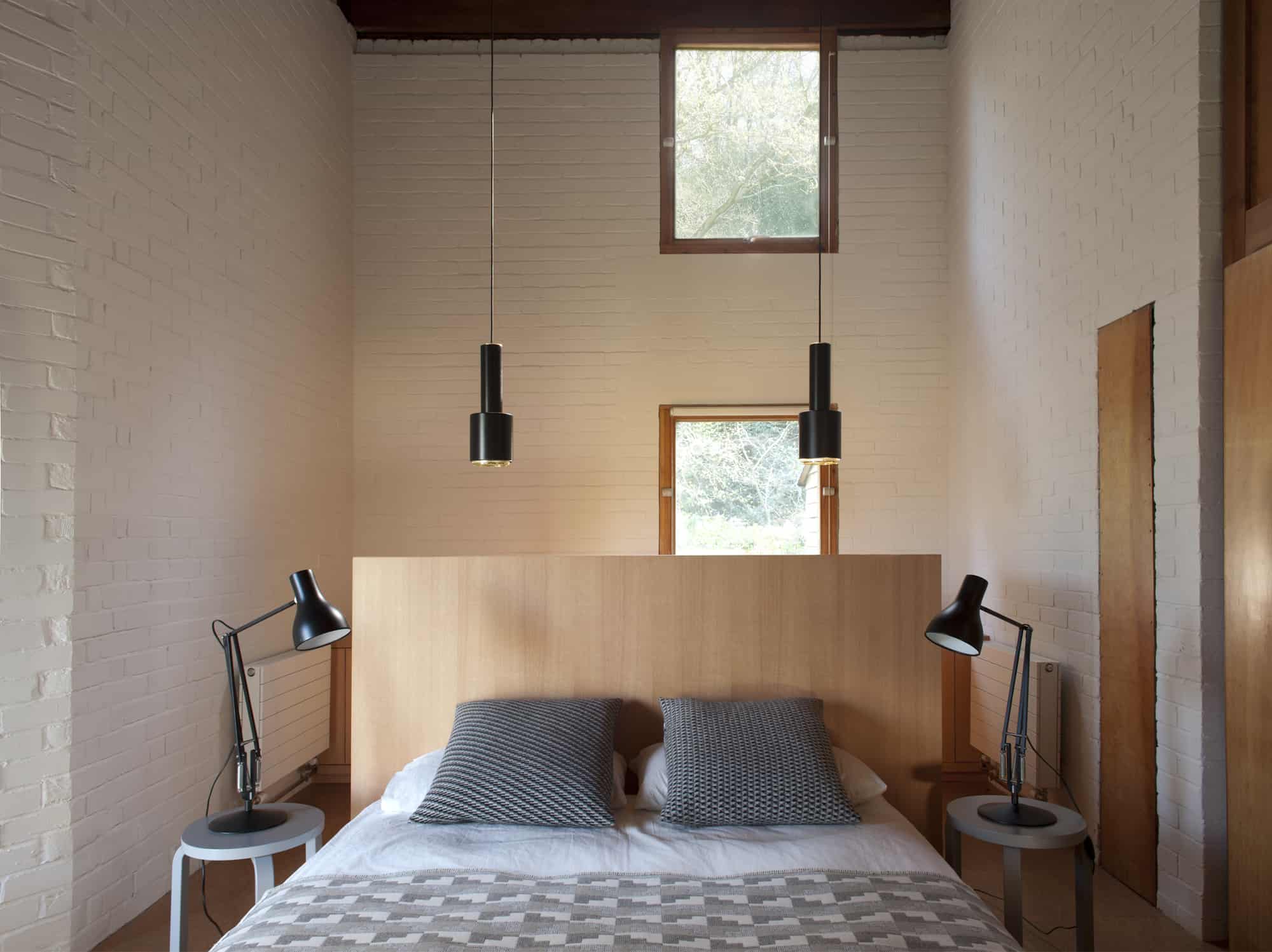
The bricks where also painted in the bedrooms. This is the bedroom over the kitchen, it is the master bedroom and has a hallway that leads to a bathroom on the left, a closet on the right and a child’s bedroom at the end of the hall.
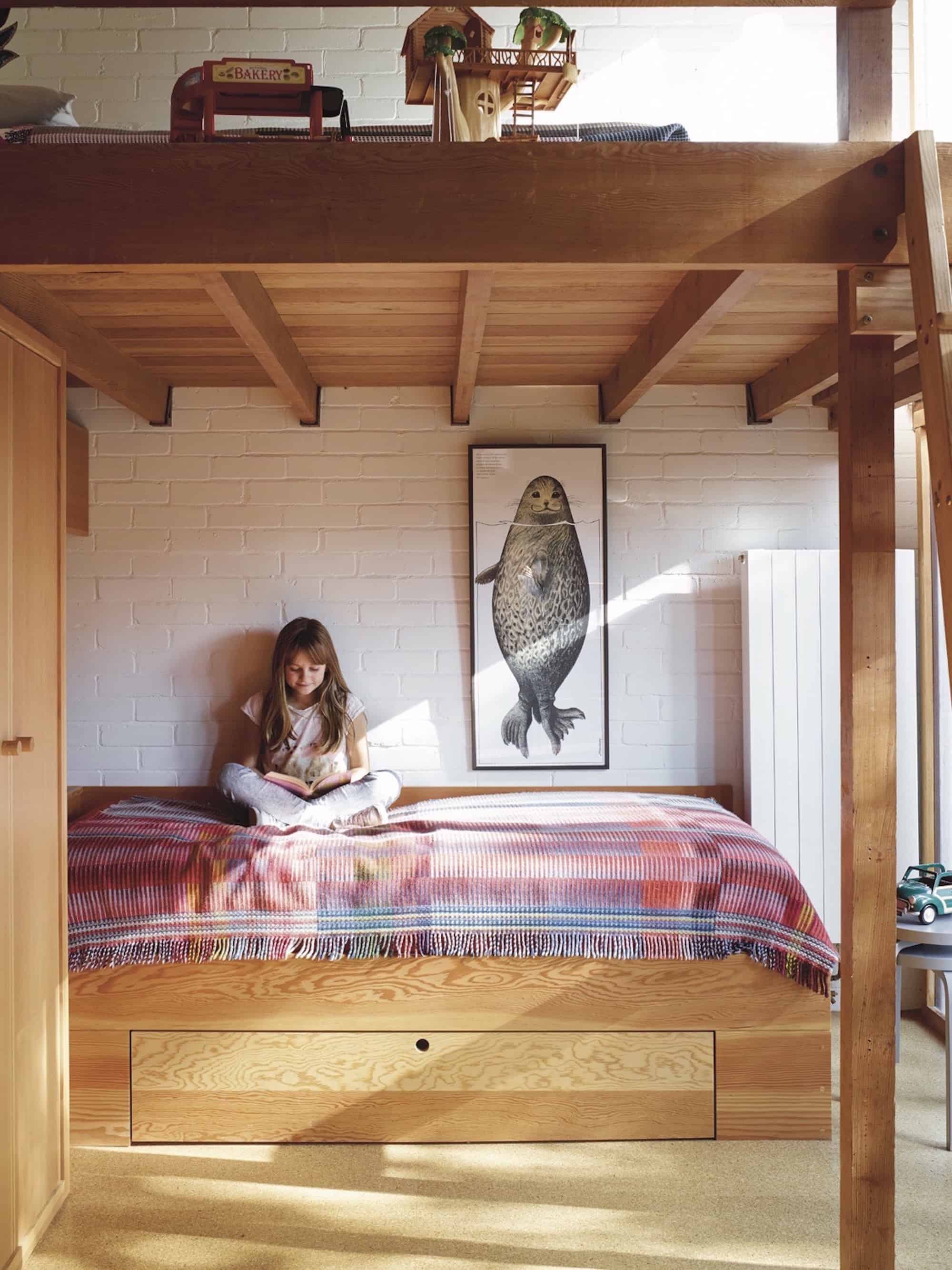
The child’s bedroom is large and includes a loft area above the bed for sleepovers. It also has built in storage underneath the bed via a large pull out drawer.

The far side of the child’s bedroom is a private play space that overlooks the side garden.
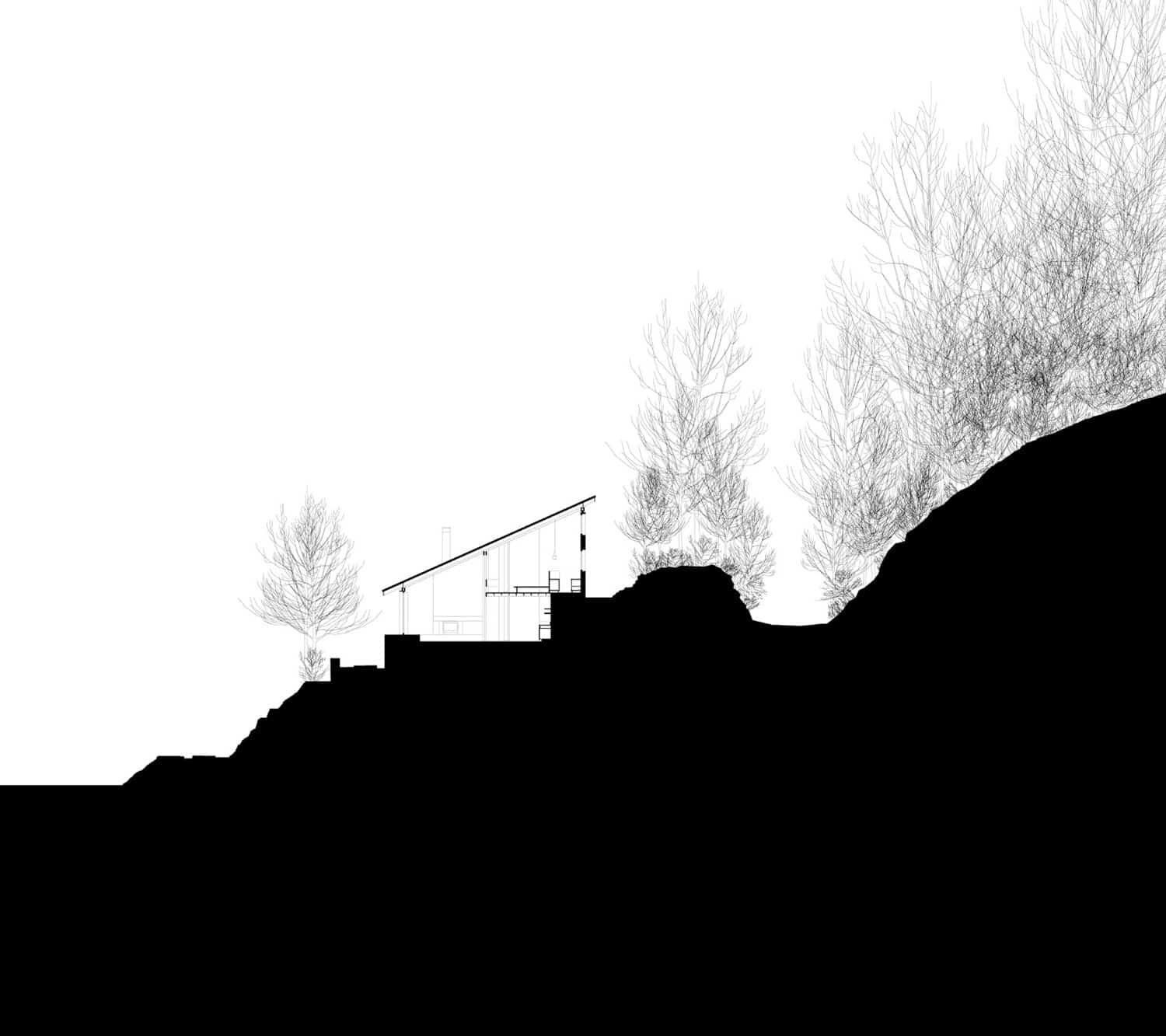
Coppin Dockray had access to some of the original working drawings and this allowed them to reinterpret some of the original zinc, stone and timber details, keeping the spirit of the structures alive while updating them for modern day lifestyles.
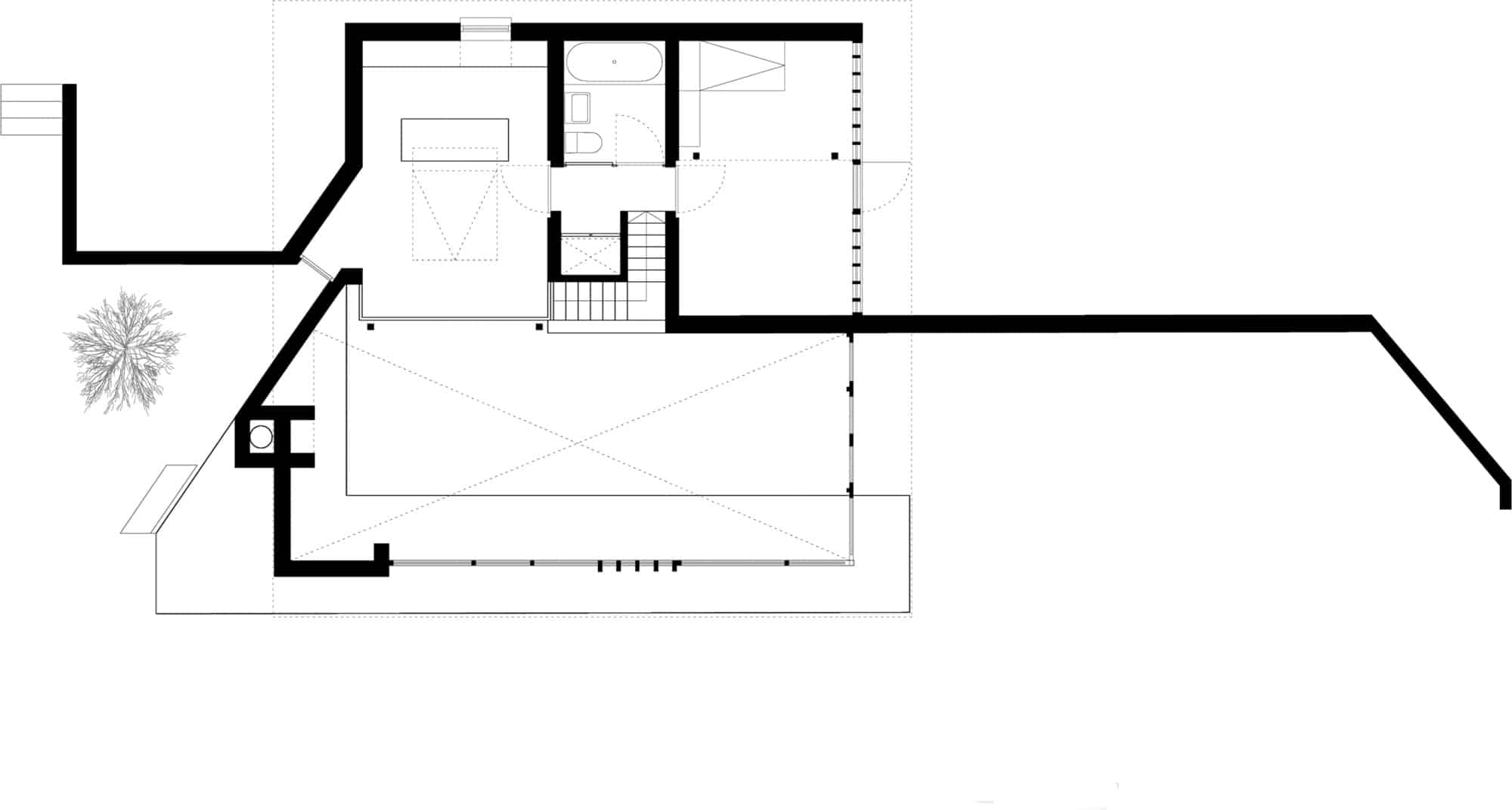
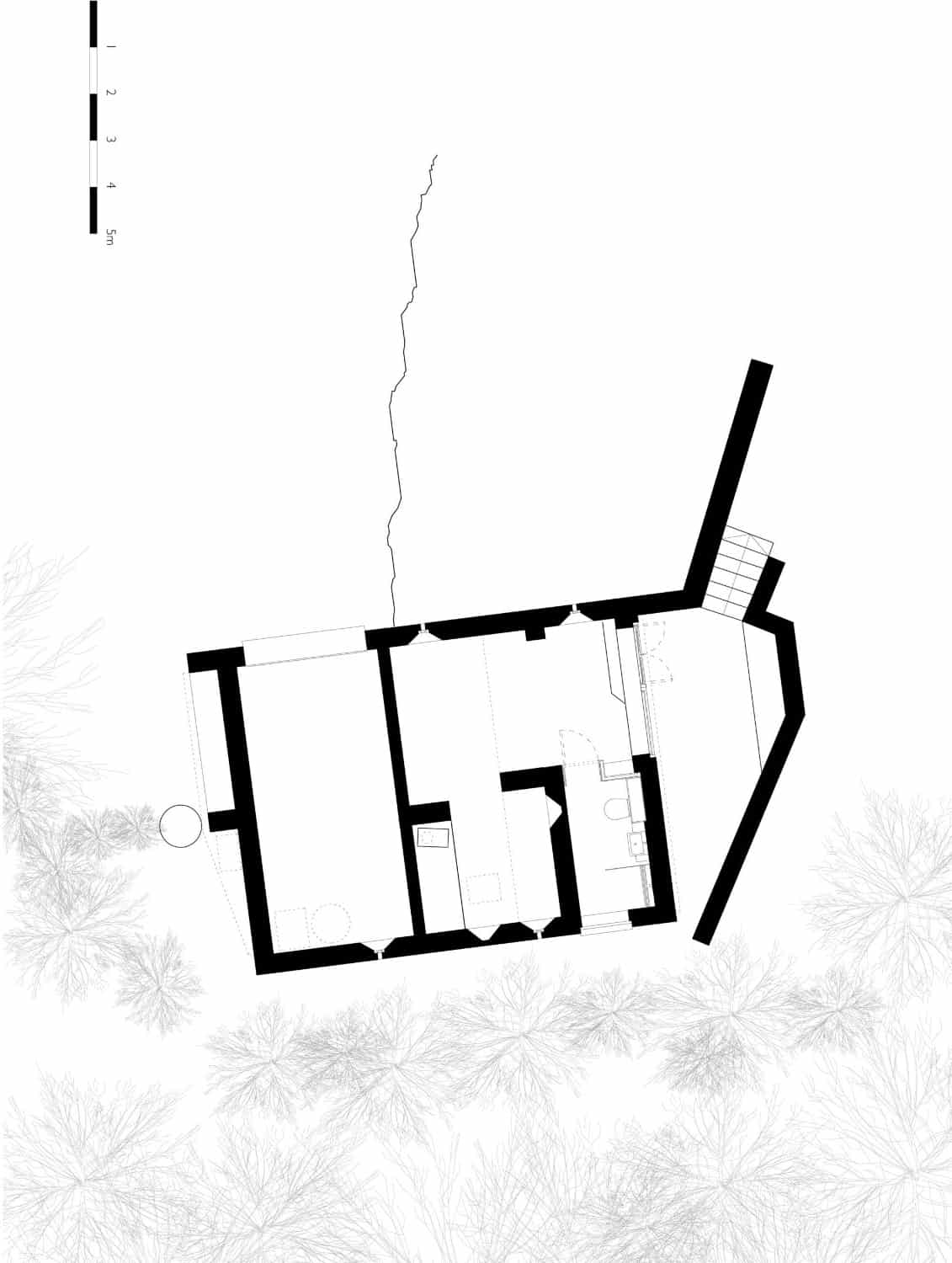
Coppin Dockray.
Photography by Brotherton Lock and Rachael Smith.
Ansty Plum House was terraced onto two tiers, with the pond and studio on two more additional levels. It is not unusual to terrace a steep site home but what makes this home unique is the incorporation of the various structures pre-existing on the site and connecting them via the meandering stonewalls. Incorporating original structures or not, stepped home architecture is always a fantastic way to take advantage of sloped site.
